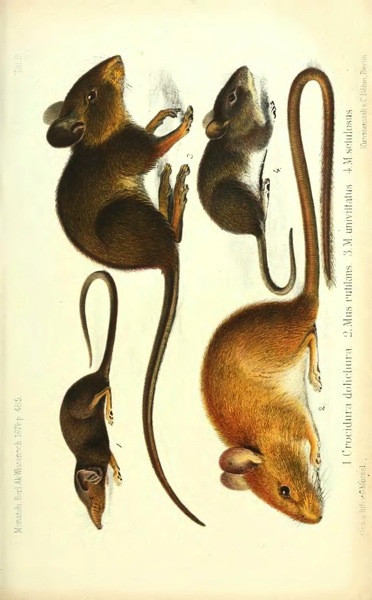Werner, E. B. ., Taylor, W. R., & Holder, A. A. (1998). A Plasmodium chabaudi protein contains a repetitive region with a predicted spectrin-like structure1Note: Nucleotide sequence data reported in this paper are available in the EMBL, GenBank™ and DDJB databases under the accession number U43145.1. Molecular and Biochemical Parasitology, 94(2), 185–196. doi:10.1016/S0166-6851(98)00067-X
These sequences (e.g., U43145) give the host as Thamnomys rutilans. You'd think it would be fairly easy to learn more about this animal, given that it hosts a relative of the cause of malaria in humans, and indeed there are a number of biomedical papers that come up in Google, e.g.:
Landau, I., & Chabaud, A. (1994). Advances in Parasitology (Vol. 33, pp. 49–90). Elsevier BV. doi:10.1016/S0065-308X(08)60411-X
Killick-Kendrick, R. (1968). Malaria parasites of Thamnomys rutilans (Rodentia, Muridae) in Nigeria. Bull World Health Organ. 1968; 38(5): 822–824. PMC2554675
Google also tells me that Thamnomys rutilans is an African rodent (e.g., 6.1.6. Rodent malaria, but NCBI has no sequences for "Thamnomys rutilans", and GBIF has no data on its distribution. If I search Mammal Species of the World I get (literally) "nothing found ...".
So, this is an African rodent, host to Plasmodium, and we know nothing about it? A bit of Googling, a trip to Wikipedia and Google Books reveals that Thamnomys rutilans is a synonym of Grammomys rutilans, but it is now called Grammomys poensis because the original name (Mus rutilans Peters 1876) is a junior

The original description of Mus rutilans Olfers, 1818 is given by The description of a new species of South American hocicudo, or long-nose mouse, genus Oxymycterus (Sigmodontinae, Muroidea), with a critical review of the generic content as:
Olfers, I. 1818. Bemerkungen zu Illiger's Ueberblick der Saugethiere nach ihrer Betheilung über die Welttheile rüchsichtlich der Südamerikanischen Arten (Species). In Eschwege, W. L., ed., Journal von Brasilien, Weimar, 15(2): 192-237.
This reference doesn't seem to be online.
The upshot of all this information about the host of Plasmodium chabaudi is hidden behind taxonomic name changes, and databases that one might expect to help simply don't. If names are the glue that link biodiversity data together then we need to get a lot better at making basic information about name changes accessible, otherwise we are creating islands of disconnected data.